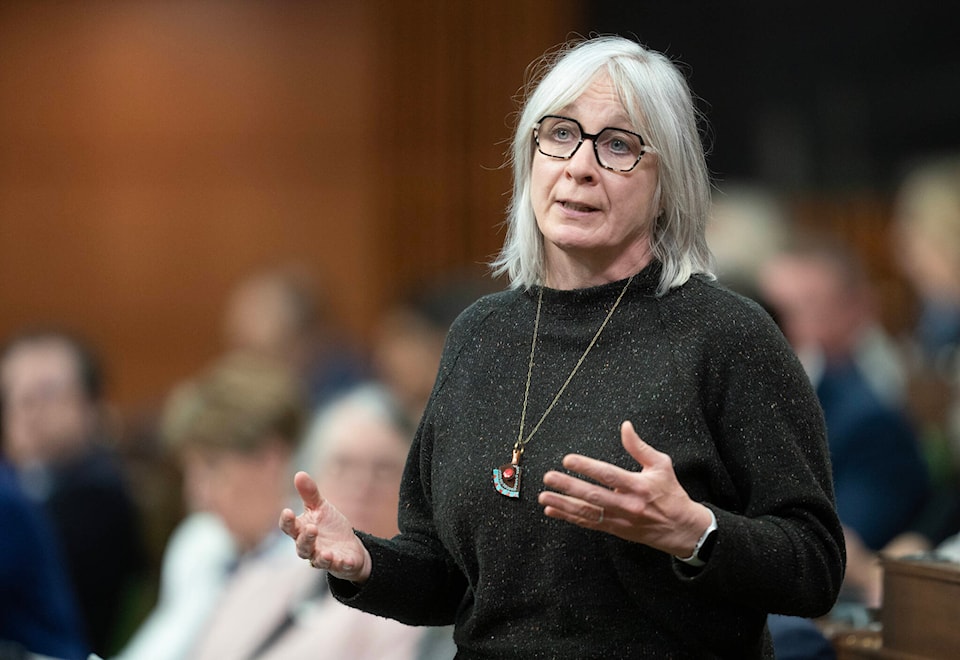The federal government is providing up to $5 billion in loan guarantees to help Indigenous communities invest in natural resource and energy products.
But when it comes to a promise to close what advocates say is a sprawling Indigenous infrastructure gap, Ottawa is short more than $420 billion.
Teased in last year’s fall economic statement, the Indigenous loan guarantee in the 2024 budget allows communities to decide which projects to invest in.
The loans would be guaranteed by the federal government, ensuring Indigenous borrowers can get more favourable interest rates.
First Nations business leaders have long called for an Indigenous loan program to allow for investments in oil and gas projects.
The First Nations Major Projects Coalition anticipates Indigenous participation in the natural resource and energy sector could reach $525 billion in capital investments over the next 10 years.
As much as $50 billion more could be needed for Indigenous equity financing, the coalition projects.
But the federal Indian Act doesn’t allow First Nations to put up their land or other assets as collateral, making financing harder to secure.
“If Canada is to make sure that Indigenous communities are able to fully benefit from the opportunities ahead, they need fair access to affordable capital that meets their unique needs,” the document says.
Last year, Ottawa committed to lending affordable capital to Indigenous communities through the Canada Infrastructure Bank to help them purchase equity stakes in infrastructure projects in which the bank is also investing.
But the infrastructure bank is only mandated to invest in projects that advance initiatives like clean power, green infrastructure, broadband technology and transportation.
Similar Indigenous loan guarantee programs already exist in Alberta, Saskatchewan and Ontario, but some stakeholders argued a lack of a federal program resulted in jurisdictional gaps that prohibited economic development.
But while Indigenous communities might be seeing gains in investment opportunities, the budget falls well short of closing the infrastructure gap.
A recent Assembly of First Nations report found that $349 billion is needed to close the infrastructure gap by 2030 — a target Ottawa had promised to meet.
To bring Indigenous infrastructure up to par with the rest of the country would require an additional $135 billion for housing, $5 billion for digital connectivity and another $209 billion for other infrastructure, the report found.
Inuit Tapiriit Kanatami, which represents more than 65,000 Inuit in Canada, also called for $75.1 billion over 35 years to support 115 projects and around $790 million annually for operations and maintenance over the next 25 years in its budget proposal to the federal government.
The Métis National Council, which represents Métis in Ontario, Alberta, Saskatchewan and British Columbia, pegs its infrastructure asks at $2.7 billion.
But the budget only allocated $918 million over five years for Indigenous Services Canada and Crown-Indigenous Relations and Northern Affairs Canada to help shrink the gap.
That $918 million includes $426 million for First Nations on reserve, $370 million for Inuit communities and $60 million for Métis communities. The previously announced $4 billion over seven years was allocated to implement an urban, rural and northern housing strategy that the government says is currently under co-development with Indigenous partners.
Tuesday’s budget also includes $89 million to support increased road access, $175 million for First Nations emergency management and preparedness and $467 million for First Nations and Inuit-led policing.
But the money promised still leaves a more than $420 billion gap that the Assembly of First Nations warned could have dire economic impacts on the communities and people it serves.
“Without these funds, infrastructure that First Nation communities across the country depend on will continue to deteriorate at an alarming pace,” the AFN report said.
“Without this investment, the health, safety, and community infrastructure of First Nations will be in worse condition with each passing year.”
Ontario regional chief Glen Hare, whose jurisdiction needs $25.8 billion for housing, said last week that community members are being forced to live in overcrowded housing because there’s nowhere else for them to go.
“People should never be faced with the harrowing decision to choose between living in overcrowded, unsafe conditions, or leaving their family and community,” Hare said.
READ ALSO:
READ ALSO:



